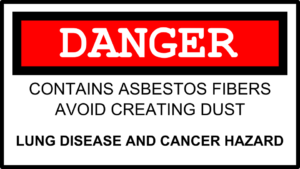Asbestos is one of the six naturally occurring minerals that are excavated from the earth. They have a tendency to shatter into extremely small fibers so little that majority of them can only be determined with the use of the asbestos microscope. They are so tiny that when they are free into the air they can possibly remain floating for hours or even for several days.
The complete elimination and termination of asbestos is performed based on the policies and guidelines lay down by the Oklahoma State Department of Labor. These policies and guidelines compel that just asbestos workforce accredited by the state are allowed to get rid of asbestos. People are warned not to attempt taking the samples by themselves because of the hazards it bring. Asbestos is stopped only once needed for restoration, modification or preservation. Not all pipeline and ceiling overlay holds asbestos, but whether it has or not, it may not be uncovered at a quick look. All samples are sure to have asbestos pending evidence on the contrary or until observed under the asbestos microscope.

This is so important for the construction companies that go into these houses also. Many times the labor force may not be aware of the asbestos danger in those old buildings (because those haven’t been tagged.) I had a friend of mine who is the owner of Atlanta Demolition tell me that many times the owners of those big old buildings aren’t aware of the asbestos that is covering the roofs or walls and there have been incidents where their workers needed to perform checkups at the hospital. Most of the times, a specialized team will go in there and scan the whole structure. But according to that friend of mine, not many demolition companies do that.
Asbestos is most probably to be spotted on steel support beams, certain ceilings in old buildings built before 1981 as well as the glue or mastic, insulation surrounding the pipelines and boilers, interiors of fire doors and in sprayed-on insulation in mechanical rooms. Edifices that contain asbestos particles in them will have warnings announced in close proximity to the key doorways oftentimes close to the fire alarm section. Pipelines and boiler insulation that have asbestos will be tagged with classifying stickers and placards. Ceiling tiles that have asbestos will not be tagged or indicated. These tiles cannot be discriminated from other tile by merely looking at them they must be examined by a laboratory test with the use of the asbestos microscope.
The commonest manner of asbestos fibers to gain entry in the body is by means of inhalation. In reality, substances or materials that have asbestos is not usually deemed to be unsafe except when it is emitting dust or fibers into the atmosphere where they can possibly be breathe in or swallowed. Loads of fibers will happen to entrapped in the membranes of the nose and throat where they can be taken away, however several may probably go beyond deep into the lungs or if consumed into the digestive tract. When they are entrapped in the body the fibers may possibly trigger health complications and can be detected by means of microscopy. Indications of asbestos-associated illnesses may not take place until twenty to forty years subsequent to exposure. Ceiling tiles, intact laboratory cabinet tops, floor tiles, fire doors, shingles, and siding shingles that contain asbestos will not emit asbestos fibers except when they are disrupted or broken in any manner. If an asbestos ceiling tile is bore or destroyed it may emit fibers into the atmosphere. If it is left untouched and undisturbed, it will not release the said fibers. Asbestos pipeline and boiler insulation is not dangerous except when the shielding canvas is slice or destroyed and the asbestos beneath is essentially released to the atmosphere. Continuous vibration, water leakage, aging and physical actions such as cutting, drilling, sawing, grinding, striking or buffing may result to breakage of the equipment making it more possible that asbestos fibers will be emitted.
Housekeepers must not sand or dry-buff floor tiles that have asbestos and only wet stripping procedures may be utilized in the course of stripping actions. Low abrasion pads should be utilized at low speed. Damaged and fallen ceiling tiles must be left in place until known. Only after that they have been recognized as not harmful they may be removed.
If you need to remind yourself of the purpose of this blog, do so by clicking here. Hopefully you are getting as much value as you can possibly get.
